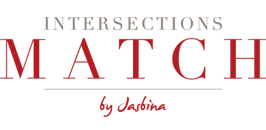Rajiv Satyal NetIP (Network of Indian Professionals) Interview – How to Develop and Sustain a Non-traditional Career
NetIP Spotlight: Live Your Potential is a monthly show featuring experts on trending topics.
“How to Develop and Sustain a Non-Traditional Career”
Jasbina Ahluwalia interviews Rajiv Satyal
Jasbina interviews stand-up comedian Rajiv Satyal.
Rajiv Satyal will discuss the following topics:
- Rajiv’s path to becoming a stand-up comedian
- How to maintain a steady income stream in artistic fields
- How to utilize your network to further your career without coming off as desperate
Rajiv Satyal is a standup comedian from Cincinnati, Ohio, whose witty, universal, and TV-clean act resonates around the world by covering everything from racial issues to soap bottles to his favorite topic – himself.
This University of Cincinnati engineer and former P&G marketer has toured with Dave Chappelle, Tim Allen, Kevin Nealon and Russell Peters. He co-founded the world-touring Make Chai Not War, a Hindu/Muslim stand-up show that traversed seven Indian cities in 2012, sponsored by the U.S. State Dept.
Rajiv named his alma mater’s online radio station BearCast, launched/managed a Miss India America’s career, and has spoken to audiences from Fortune 50 companies to NFL players on innovation, diversity and personal branding.
He runs a consulting business called the Standpoint Agency, which helps marketers generate insights for their brands.
Rajiv has garnered 3 million+ YouTube views, performed on three continents and has been featured on NBC, NPR, Nickelodeon, FX, Netflix, Times Now, TV Asia, and Pandora, as well as in The Wall Street Journal, Advertising Age, The Huffington Post, India Abroad, The Cincinnati Enquirer, and the LA Times.
He has done stand-up at more than 70 colleges and is a regular at all major comedy clubs in LA. His corporate clients include P&G, GE, General Mills, Quaker, Cisco and more.
Rajiv acts, improvises, records a weekly podcast and writes TV ads. His favorite sites in the whole wide world are facebook.com/funnyindian and rajivsatyal.com. This LA-based pocket pundit challenges people to see a new point-of-view. Most of all, he talks about what it’s like to be Rajiv. And we all have some Rajiv in us, even if we don’t want to admit it.
_____
(00:53): Hello everyone. Welcome to NetIP Spotlight: Live Your Potential where we invite guest experts to speak on a variety of trending topics that matter to you. I’m Jasbina Ahluwalia, your host. I want to warmly welcome you to our show this evening.
I know everyone is crazy busy these days. I appreciate your investing time and joining us this evening. To give you a lay of the land, our guest speaker and I will be discussing his insights for about 15 to 20 minutes. After the discussion, you’ll have the opportunity to ask him any questions that you might have. With that said, let’s jump in.
Today’s guest speaker is Rajiv Satyal, a standup comedian. He’s a University of Cincinnati engineer and former P&G marketer who has his own show with the Hollywood Laugh Factory every Wednesday at 8:00 PM. He performs regularly at all the major comedy clubs in L.A.
He co-founded the world-touring Make Chai, Not War. This is a standup show that traversed seven Indian cities in 2012, sponsored by the U.S. State Department. Rajiv has garnered three million plus YouTube views and performed on three continents. He has been featured on NBC, NPR, Nickelodeon, FX, Netflix and Pandora, as well as in the Wall Street Journal, Rajiv wrote a 95-minute one-person show, No Man’s Land, which sold out all six performances from L.A. to New York and San Francisco to Cincinnati. Rajiv has toured with Dave Chappelle, Tim Allen, Kevin Nealon and Russell Peters. Rajiv named his alma-mater’s online radio show BearCast. He has launched and managed Miss India-America’s career and has spoken to audiences from Fortune 50 companies to NFL Players on innovation, diversity and personal branding. He runs a consulting business called The Standpoint Agency, which helps marketers generate insights for their brands. Welcome to the show, Rajiv. Rajiv Satyal (2:55): Thank you for having me on. I had no idea my bio read that long! (3:00): I think it’s completely impressive and it’s interesting for our audience to see the diversity of your experience here. It really gives us flavors. Tell us about your past and becoming a standup comedian. (3:15): Thanks for having me on. It’s great to reconnect with you. I know that we have both participated on NetIP on a couple of occasions. Actually, we’re on the same panel, so it’s great to reconnect with you. I know it’s going to be a lot of fun. The path from engineer to entertainer has been a fun one. I was born in Cincinnati, Ohio and my parents are still there. I have two brothers who are now both in New York City. I got a degree in Engineering from the University of Cincinnati. Then I worked at Proctor & Gamble for six years. I turned 30 and flipped out that I was in Ohio for three decades without leaving. Then I moved to Los Angeles. I was brand manager of P&G Water for twelve weeks. Then I jumped ship and I’ve been doing standup comedy for 12 years total, and eight years full-time. (4:05): Wow! Tell us a little bit more about the jumping and then where you work today. Our listeners are going to be fascinated by this. Tell us about leaving your corporate job and getting on stage to do your comedy. Tell us a little bit more about that. I know from that panel, you’ve got some fascinating stuff, so share it! Rajiv Satyal (4:30): Sure, thank you very much. I did a panel at NetIP in Atlanta, and actually it was just me this time. It was funny because I went through all this advice and I forgot to give them the up-topping that I gave you. I was sort of like, “Yes, but who are you?” I wanted to make sure I didn’t make that same mistake. There are a few inflection points that are illustrated through the questions that I get from people a lot. Some of these questions are, “When did you realize you were funny? When did you realize you wanted to be a standup comic? When did you get into it? When did you make the leap into full-time?” It seems like those are the four questions that I get a lot. I realized I was funny when I was nine years old in third grade. I wanted to do standup only a couple weeks before I did it. My brother found an article in the local paper and it was called, The Funniest Person in Cincinnati Contest. I entered it and made the semi-finals. The next year, I won it. I didn’t really know that I wanted to be a standup comic, even though I was doing it on the side for four years in Cincinnati. A lot of my friends asked me if I was going to do it as a job. I said, “No. That’s not a good job.” I didn’t really think of it that way. It was just sort of an on-the-side passion of mine. Finally when I was 30, I moved to Los Angeles. I made the leap into full-time really only a few weeks after I got here. (6:10): It’s so interesting that you say initially that you didn’t think of it as a career. It didn’t even come to mind that this might be what you could be doing full-time. Now, more Indian-Americans are pursuing artistic fields for a living, and they’re really putting themselves on that path. What guidance might you have for them for how to meet change and study income streams while being on that path? Any tips for aspiring artists? Rajiv Satyal (6:40): Yes, definitely. Having done it and doing it now, I think it’s getting easier. It’s not easy, but it’s easier now because when someone like Russell Peters went into it, he’s from Canada and he started in 1989. You can imagine the gusto it must have taken for him to talk to his parents about being a standup comic in 1989. He released his special where he’s in the white shirt, and that’s the one that really went viral and put him on the map in 2004 or 2005. He’d been doing standup for 14 years at that point. I don’t think people realize that. I think comedians or even actors say, “Oh, you’re just a natural. You just get up there and do it.” No, it’s like they say, “It’s an overnight success after 14 years.” All of a sudden, where did this person come from? It’s more like, “No, I’ve been here, you guys just got here!” By the time he did it and really blew up, he’d been doing it quite a while. Now I’ve been doing it 12 years and he had been doing it 14 years. He cut through the forest. There was nothing there, no path. After he did, then some of my contemporaries came along as well, and we had it a little easier. Now the standups entering the game, I feel like they can think about it in terms of a career. There’s a sort of “notches on the belt” that you can gain to track your progress. (8:12): Okay, how interesting. I agree in terms of carving a path. Now, you’ve been doing it for 12 years. It’s very helpful that you mentioned that you get notches in your belt along the way. Tell us about a couple of those notches in terms of the milestones in your journey for the last 12 years. Rajiv Satyal (8:39): I’ll relate it back to your first question as well, which was how do you maintain a steady income? I think it’s pretty important to understand your risk profile. It’s kind of like investing. You have your aggressive investors and you have your conservative investors. You take 120 minus your age and that’s how much you should have in stocks. Otherwise, you have to be diversified and all that. That number always changes depending on how risky you want to be. I remember working at Proctor & Gamble. At the time, my second position there of three was managing and co-leading branded entertainment strategy for all brands in North America. I used to speak to this guy who was out here in L.A., and he still is. He was my liaison at CAA, which is Creative Artists Agency, the largest talent forum in the world. We forged this professional and personal working relationship and friendship. I remember talking to him for an hour a day on the phone, and he became a mentor of mine. I remember telling him that I was a “wild and crazy guy.” I remember what he said to me. He said, “Oh, yes. Six years at Proctor & Gamble and 30 years in Ohio. You’re really a wild and crazy guy!” I was speechless for one of the few times in my life. I said, “Man, what do you mean by that?” He said, “You can admit that your values are security and stability and then do exactly what you’re doing. Live in Ohio, buy a house, settle down and work a job where the path is well-defined. Or you can say that you’re a wild and crazy guy and do something wild and crazy, like move to L.A. and be a standup comedian. That would be wild and crazy. I’m not telling you to do that, but you’re going to be in conflict with yourself as long as you don’t embrace whatever values you truly have.” I felt like I had to sit down and say, “How much risk am I willing to take on? How much money in the bank do I need? Am I okay without a steady paycheck?” Wherever you are, that’s your world. When I was at Proctor & Gamble, it was my world. I could never imagine that there was anything outside of it. Of course, when you step out of it, you realize that there’s a whole other world out here. It just kind of unfolds from there. (10:49): That is interesting. There was a mentor that you had in your corporate life, who had that insight for you. Is that right? Rajiv Satyal (11:14): You’re absolutely right. That’s correct. Even out here in L.A. working in entertainment, but then you know there’s a corporate side of it. He straddled both worlds, so his advice was particularly brilliant. (11:28): Was there a point somewhere in those 12 years that you questioned your career choice? Was there another point where you said, “Wow, this is it! I’m not going back to corporate?” Was there any point at which you were second-guessing or knowing you could go full-speed ahead when making that decision? Rajiv Satyal (11:53): I would say generally it’s full-speed ahead. There were a couple of things in there. First, that happened in 2011. I realized after I’d been doing it full-time about five years that I would be okay. I may not become Russell Peters or Aziz Ansari, but I’m going to be okay. That is where a lot of people make mistakes in entertainment. They dichotomize it. You either make it or you don’t. You’re either huge or you’re nothing. That’s not true. It’s a profession like anything else. This is the non-sexy side of it that people don’t want to discuss. They think it’s glamorous and it’s fame and all that. No, there are a lot of standup comics walking around that make $200K to $400K a year, but you’ve never heard of them. They work corporations and colleges. They do private gigs. Some of those guys are very well-paid, and I do some of that work as well. You can definitely make it to the middle and do very well for yourself, but maybe you just won’t attain that level of fame. That’s okay. In 2011, I thought, “You know what? I’m good enough to do this. I’m going to do this forever.” Then in 2012, I started making the kind of money where I thought, “I know you’re okay.” In 2011, I felt like I was going to be okay, but in 2012, I knew for sure I was going to be okay. It kind of unfolded from there. In 2013, I figured out the date that this became my longest job. I was at Proctor & Gamble for six years. I realized that this was now my longest job and I’m doing this. (13:43): You realized there was a tipping point. What tips do you have for utilizing your network effectively? If one decides that this is the route they want to pursue as a passion in the artistic field, what advice do you have for them for utilizing the network they already have to further their career without coming off as desperate? Any thoughts in that regard? Rajiv Satyal (14:08): Yes, striking that tone is very important. I send out a newsletter every month. The newsletter tone has always been showcasing what I’m doing. It puts my stuff out there. The ideas strike a tone that says, “This guy’s doing well, but maybe with my help he could do better.” I think that’s generally the tone you want to take with anything. When you apply to grad school or business school, isn’t that kind of what you’re saying? “Hey, I’m doing all of these things without Harvard, Stanford or USC. With the two of us together, imagine what we could do.” I think that’s the tone that you really want to strike. You say, “Hey, these are the things I’m doing for myself, but I need a little bit of this now so I can get to this next level.” I think you need to be very specific with people as to what exactly you want. Furthermore, we all have a network. When I got to Los Angeles, just like in my other cities of Cincinnati and New York, I realized that everyone has a friend in L.A. I said, “Hey, do you mind putting me in touch with someone. How about an email intro so I can meet your friends in L.A.?” They did that. By the time I got here, I had friends of friends, but I had a place to get started. Luckily, in L.A. and in New York where the entertainment primarily is in this country, most people have a friend there. Even if they don’t work in entertainment, they may have a friend there who probably knows someone who does. I think it’s using this two-to-three degrees of connections, especially in the Indian and South Asian community. I feel like Indian-Americans are all pretty well-connected, so don’t feel bad in using them. I think the biggest mistake people make is that they make that initial outreach, but they don’t close the loop with the person who made the introduction. That’s a big thing. After you meet with the person who your friend recommended, go back to your friend and close the loop with them. Talk to people when you don’t need something. That gets harder as you get busier, but closing the loop and staying in touch with people when you don’t need something builds those strong relationships. (16:20): I think that’s a great point. Closing a loop when you don’t need something, remaining in touch and then being specific about what you want really does help people. Being specific really jogs people’s minds. I love that you don’t have to narrow yourself to who you know working in the industry. There are so many touch points and I love those points. I really appreciate you sharing your insights with our listeners, Rajiv. Do you have any last thoughts or take-home message that you’d like to share with our listeners before we jump into the Q&A and give them a chance to ask you questions? Rajiv Satyal (17:18): I do a lot of personal branding work with people and it’s something that is kind of on the comedy stage, but it doesn’t necessarily have to be. I’ve got a series of questions and points for people to think about. One of the things to think about to start with is to figure out what you are. That is a big question. What am I? Are you a comedian, engineer, marketer or a politician? There are a couple of quotes about that, such as “You can be anything, but you can’t be everything.” I love that quote. There’s one that is even more empowering, such as, “You can be everything, just not everything all at once.” You could have these different phases of your life. Maybe you’re a businessman, then an entertainer, then a politician. A lot of people have done that. Arnold Schwarzenegger did that. I think you need to realize that you don’t have to do it all at once. Work on defining yourself through things that you do with tangible accomplishments. Writers write. If you’re not writing every day, then you’re probably not a writer because we’re compelled to do it every day. It’s an important thing to do. Point to the tangible accomplishments and do something about it. Doing one small thing is better than thinking ten things that don’t get done. (18:48): Ok, well thank you so much. I want to give everyone a chance to ask you a question. Now is your chance to ask Rajiv any questions you might have. Welcome, caller. Caller One (19:27): Hi, Rajiv. I just wanted to say thanks for joining. We really appreciate having you on. I wanted to let everyone know that I’m President of NetIP of North America, and I wanted to thank you for your participation with NetIP for the last few years. How does it feel to have your name known and your recent video loved? Rajiv Satyal (19:53): Thank you so much. I appreciate you bringing that up. The fact that my video was retweeted to 4.7 million people was kind of mind-blowing. It’s funny when I was talking about closing the loop, I got a comment from a friend who said, “Oh, you didn’t thank the person who told you about this.” When I was telling you about closing the loop, I was actually thinking about my friend, who now gets the message on the radio. That more than makes up for it. That’s even bigger than a Facebook comment. It’s an amazing feeling. I was just writing about this in a blog post. We get really caught up in, “Hey, I’ll make this and maybe it will lead to this and that.” You can’t do that. You just have to create something that you wish existed and then make it. Lalit Modi, the Founder of the Indian Premier League, the biggest cricket league in the world, flew me out to Istanbul last week to do a gig. That happened as a result of that video, and it’s totally crazy and surreal. I’m so lucky and I couldn’t have done it without the support of the South Asian community. (21:25): Excellent. For the listeners who haven’t had a chance to see the video, tell us a little bit more about that while we’re waiting for the next question. Rajiv Satyal (21:52): Sure. The video right now is approaching 300,000 views on YouTube. That doesn’t include Facebook and each of those have 70,000 shares. It wasn’t just likes or comments, it was shares. I don’t mean to sound like I’m bragging, but this is insane. This is a video about being Indian and it’s resonated with a lot of people. I had a director, editor and cinematographer and we all banded together to do this. I don’t feel like I’m bragging on myself, it’s more of saying, “Look at our network.” We were talking about networking. That’s the power of the network. Just in that community, you can see how many likes and comments we can get and it’s pretty cool. (22:46): That’s amazing. We have another question here. Welcome, caller. Caller Two (22:58): Hi, Jasbina and Rajiv. Thank you very much for doing this interview. It’s very informative. You is that you are up there many times speaking to hundreds and thousands of people. What are some of the public speaking skills that you have honed over the years that you can share with us for those who speak at different locations? Rajiv Satyal (23:24): That’s a great question. It’s a very common question I get and it’s a phenomenal one. The biggest thing that I think was very helpful to me early was when I was giving the commencement address in high school before standup. I remember the person who was coaching me. She was my English teacher, Mrs. Wilson. She was also a speech teacher. She asked me this question, because I was giving a speech and there were about 2,000 or 3,000 people in the hall. She said, “How many people have a copy of your speech?” I said, “Nobody, I’m the only one.” She said, “That’s right. They’re only going to know that you messed up if you let them know.” I thought, “Oh, that’s really good! You’re right.” Stand there with confidence and it’s always going faster than you think. I’ve heard this advice elsewhere, which is, “If you think you’re going too slow, slow down.” Have you ever seen a speech where a person was speaking too slowly? I’ve never seen that. I’ve seen boring speakers who have taken too long, but I’ve never complained about the pace of the speech. This person could go fast because he or she is nervous. Take a minute and realize that it’s not moving as fast you think it is. You have a little bit more time. Take a deep breath. Slow down and enunciate to hit your points. Realize that no one has a copy of your speech. (24:55): Thank you, Rajiv. I love that. No one has a copy of your speech. I think that’s brilliant. It looks like we hit our questions, so thank you so much for taking our listener’s questions. What is best way for our listeners to contact you in the future if they’d like to do so? Rajiv Satyal (25:18): I’m @FunnyIndian on Twitter. I’m on Instagram and Facebook. They can also go to my website www.funnyindian.com, which redirects to www.rajivsatyal.com. Send me an email. That’s probably the best thing. I can be pretty slow in responding, but I eventually get back to everyone. I’m always happy to follow up with people and respond to them. The people who’ve helped me, Russell Peters and Kevin Nealon, have always taken the time to help me and give me advice. I just want to pay it forward. (26:12): Thank you so much. Thanks for your generous offer in that regard as well. In case you joined us late or if you’d like to share this show with people in your life, a recording of this show will be sent out. I appreciate everyone hanging out with us. Make sure to join us for next month’s show. Goodnight, everyone. _____ What do you think? Would you like to add to the insights shared in the Rajiv Satyal interview? Share your thoughts in the comments below. _____
Rajiv Satyal





